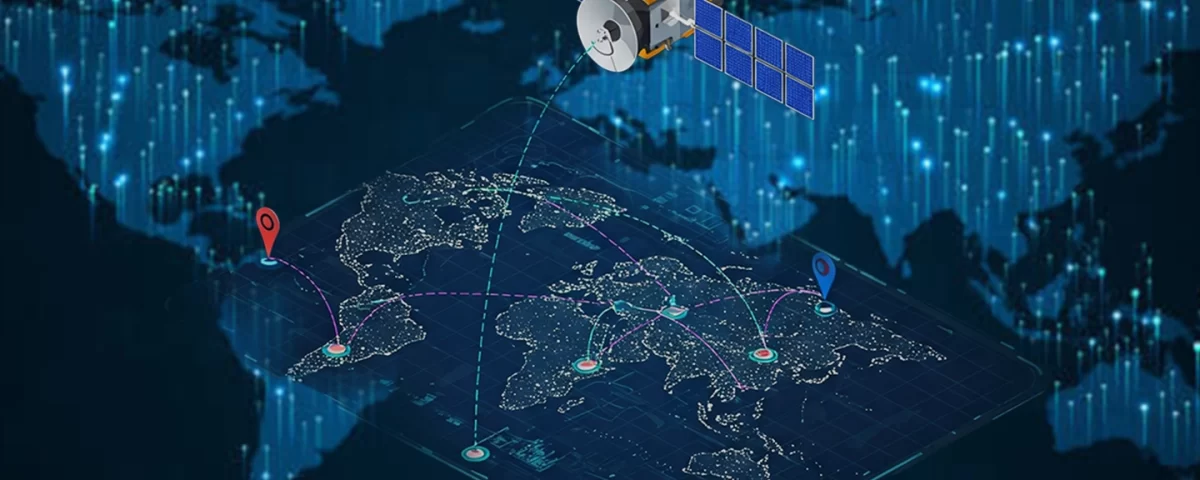
requirements for an OBC for a deep space mission
February 15, 2025high-accuracy star trackers for precise satellite pointing and navigation
February 16, 2025Low Earth Orbit (LEO) satellites play a vital role in various applications, including Earth observation, communication, and navigation. Precise orbit determination (POD) is crucial for these satellites to function effectively. Global Positioning System (GPS) has emerged as a powerful tool for achieving high-accuracy POD of LEO satellites.
How GPS Works for POD?
GPS-based Precise Orbit Determination (POD) leverages the signals transmitted by the GPS satellite constellation. A LEO satellite equipped with a GPS receiver tracks signals from multiple GPS satellites, measuring the time it takes for these signals to arrive. Knowing the precise orbital information of the GPS satellites and the signal travel times, the LEO satellite’s position can be calculated through trilateration, a process of solving geometric equations. Sophisticated algorithms and models are then applied to account for various error sources, such as atmospheric delays and relativistic effects, enabling highly accurate determination of the LEO satellite’s orbit. This process allows for continuous, near real-time tracking and precise knowledge of the LEO satellite’s position in space.
Advantages of utilizing GPS for precise orbit determination
- A big advantage of using GPS for figuring out a satellite’s orbit is its global reach. Regular tracking stations on the ground can’t see everywhere, especially over oceans and far-off places. But GPS, with its own group of satellites circling Earth, can see almost the whole planet all the time. This means we can track LEO satellites and know exactly where they are, no matter where they are. This is really important for satellites that need to cover large areas, like those used for weather, communication, and navigation.
- Besides covering the whole Earth, GPS is incredibly accurate at figuring out a satellite’s orbit. Because GPS uses very precise timing and some clever math, we can know a satellite’s position within centimeters. This super-high accuracy is really important for many things. For example, satellites that take pictures of Earth need to know their exact location to pinpoint things on the ground correctly. Communication satellites also need to know exactly where they are to talk to ground stations reliably. GPS accuracy is a huge improvement, making missions possible that we couldn’t do before with less precise tracking.
- GPS lets us know where a satellite is almost instantly, which is another big plus. Because GPS data comes in constantly, we can quickly figure out the satellite’s orbit and always have its current location. This is super important for things like avoiding crashes with space junk or other satellites – knowing exactly where a satellite is right now lets us move it out of the way. Real-time tracking is also key for pointing things accurately, like aiming a telescope or laser at a specific spot.
- On top of that, GPS is a much cheaper way to track satellites. Building and running a worldwide network of ground stations is really expensive. GPS receivers, on the other hand, are pretty cheap and easy to get. This makes GPS tracking much more affordable, especially for smaller projects or groups with limited budgets. Lower costs mean more people and organizations can now do things in space.
Challenges and Limitations of using GPS for precise orbit determination
- Signal blockage: GPS signals can be blocked by obstacles such as buildings, trees, and terrain, which can affect the accuracy of POD.
- Atmospheric effects: The Earth’s atmosphere can introduce delays and errors in GPS signals, which need to be accounted for in POD calculations.
- GPS satellite availability: The number of GPS satellites visible to a LEO satellite can vary depending on its orbit and location, which can affect the accuracy of POD.
GPS has revolutionized the field of precise orbit determination for LEO satellites. Its high accuracy, global coverage, real-time capability, and cost-effectiveness have made it an indispensable tool for various LEO satellite applications. While challenges and limitations exist, ongoing research and technological advancements continue to improve the accuracy and reliability of GPS-based POD.




